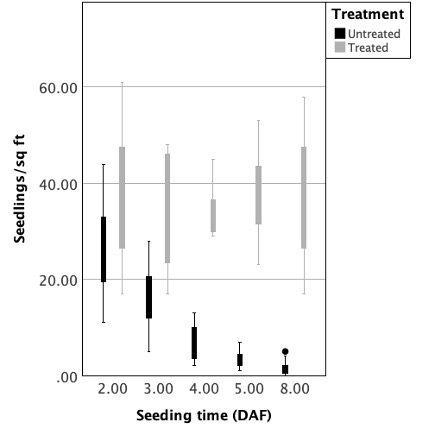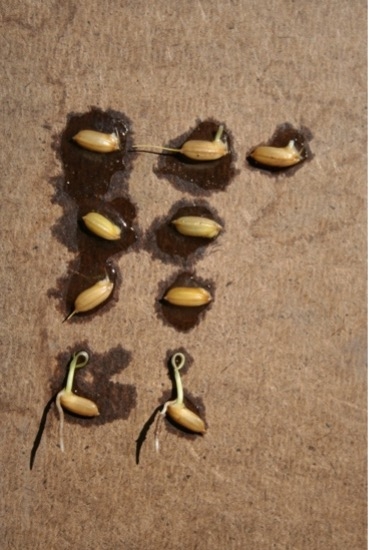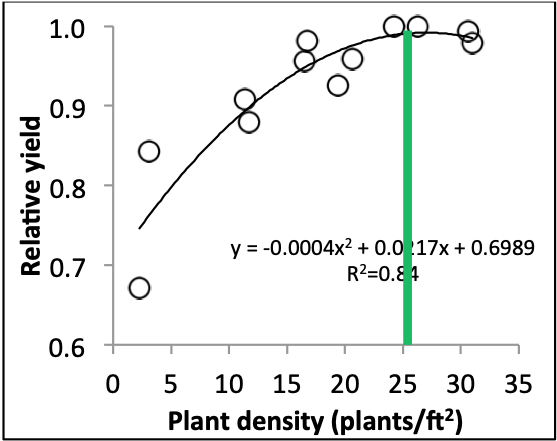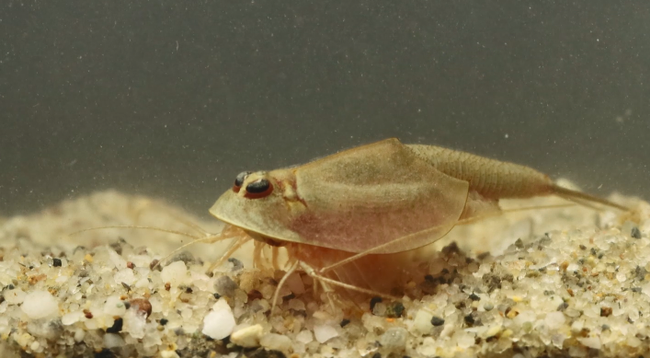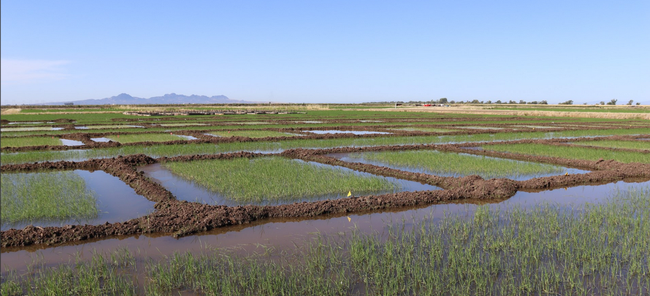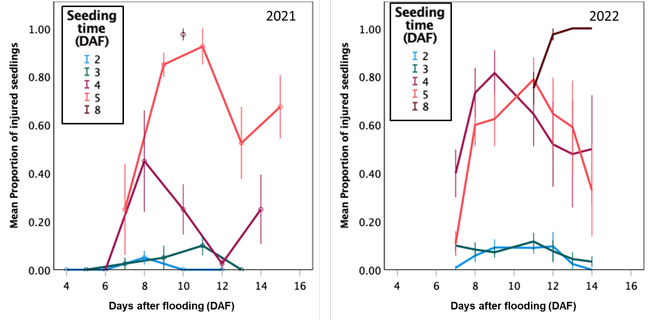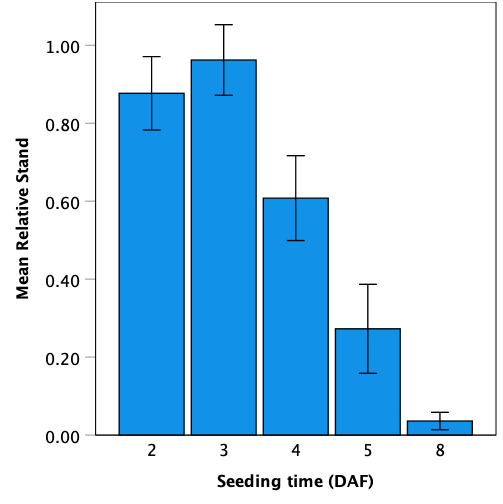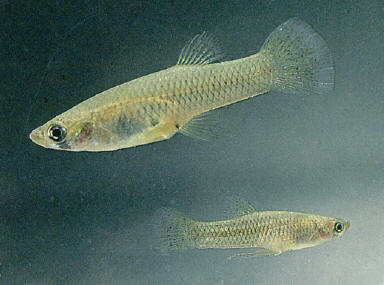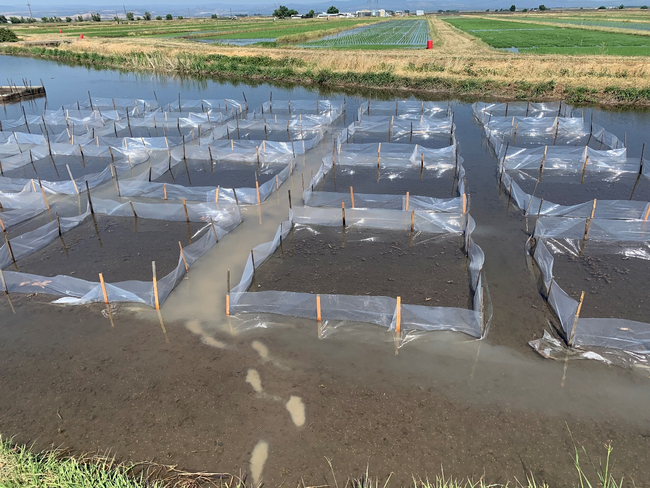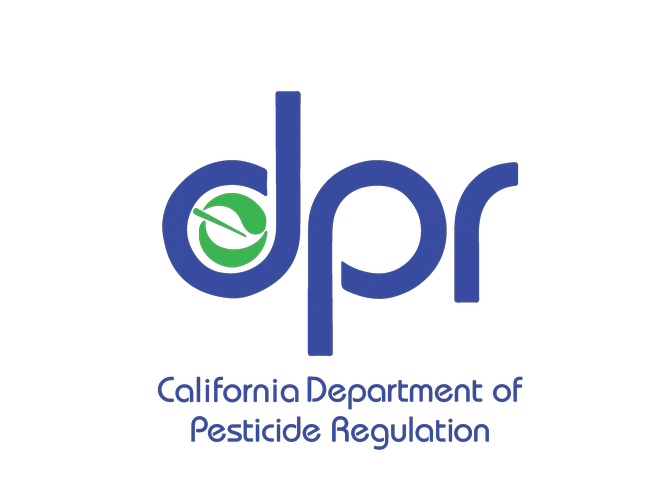- Author: Sarah Marsh
- Editor: Taiyu Guan
- Editor: Consuelo B Baez Vega
We have had some interesting calls lately concerning issues we do not usually see in the fields. We have received calls about small circular areas with “snipped” rice in fields west of I-5.
As we stood at the edge of the field, a quiet rustle alerted us. We spotted a small, brown rodent slipping into the field, likely a Norway rat based on the length of the hairless tail, which was shorter than the length of the rodent's body.
The Norway rat is probably the most serious vertebrate pest of rice and it can feed throughout the season, from seedling stage to ripening grain. However, we have not seen a large amount of damage from these rodents, indicating that the level of infestation is not high enough to warrant treatment.
Bait boxes, zinc phosphide, and aluminum phosphine tablets are options for control (2024); however, there are additional requirements for these besides an applicator license or certificate. Zinc phosphide and aluminum phosphine are CA Restricted Materials and an additional Burrowing Vertebrate Fumigation qualification is required for aluminum phosphine use. If conditions suggest that rodenticide is the best option, the rodenticide and application method should be chosen with regard for potential non-target hazards. Consult your Agricultural Commissioner for specific information.
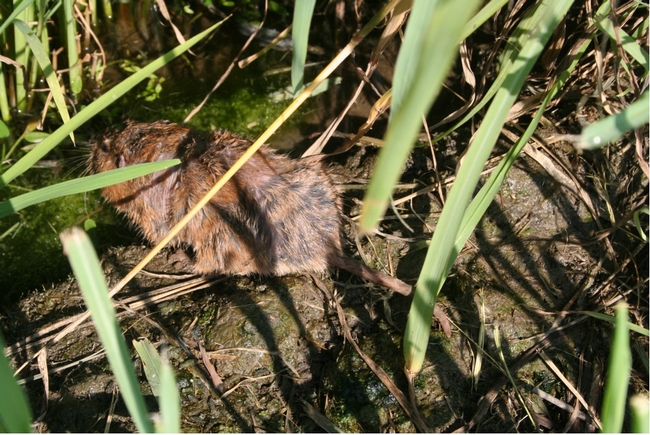
- Author: Whitney Brim-DeForest
- Author: Luis Espino
- Author: Roberta Firoved
- Editor: Taiyu Guan
- View More...
At our last meeting, we had some questions about the approved uses of pendimethalin in California rice. There are several products labeled for use on rice with pendimethalin as the active ingredient. As of June 2024, pendimethalin registered products (on rice) include Prowl H2O, Prowl 3.3, Harbinger, Satellite Hydrocap, Stealth, Helena Pendimethalin, Pavilion H2O, Pavilion 3.3, and a few others. Please make sure to always check the product label, as not all pendimethalin products allow use for the below-listed timings. Furthermore, labels are updated regularly, so it should not be assumed that the same use pattern applies from season to season. For the most currently-registered products, refer to the California Department of Pesticide Regulation website, product label databases, as well as manufacturers' websites for reference. Please remember the container label is the deciding point for pesticide use enforcement.
The mode of action of pendimethalin is disruption of mitosis (WSSA Resistance Group 3). In California rice, there is no other herbicide registered with this mode of action. The herbicide binds to clay soils, with residual activity of between 1 to 4 months, depending on environmental conditions. Pendimethalin can be readily absorbed by young roots, and thus, weeds are controlled as they germinate. Damage can also occur to rice or other crops as they germinate. Weeds are not controlled by this product once emerged and established.
Labeled controlled weeds are: junglerice, barnyardgrass, and sprangletop. Barnyardgrass and sprangletop are the two most abundant grass weeds in dry- or drill-seeded California rice, also causing the most yield loss. Rotating with pendimethalin can help to manage herbicide-resistance biotypes, as well as preventing the selection of herbicide resistance in these species.
Pendimethalin Rice Timings (product-dependent):
Preflood, preemergence: In drill- or dry-seeded rice, pendimethalin can be applied to the soil surface AFTER rice has been dry-seeded and lightly incorporated or drill-seeded. The product should be tank-mixed with a safener adjuvant. Water should be flushed across the field AFTER herbicide application (within 7 days).
Delayed preemergence: NOT a currently labeled use for any pendimethalin product registered in California.
Early postemergence: Only for dry-seeded rice and into fields with no standing water. Pendimethalin is usually applied with a tank-mix partner. Timing should be based on the leaf stage of the rice or weeds as appropriate for the tank-mix partner. Field should be flooded or flushed within 7 days after application.
Postemergence: For water-seeded rice (California ONLY) between the 4-6 leaf stage. Field must be completely drained with no standing water at time of the pendimethalin application and should be reflooded within 7 days after application.
- Author: Whitney Brim-DeForest
- Author: Taiyu Guan
Watergrass (Echinochloa spp.) in California rice is the most competitive weed complex. Plants can emerge under both continuously flooded conditions and flushed conditions, causing huge yield losses (up to 100% in dry- or drill-seeded systems). Watergrass is one of the first weed groups in which herbicide resistance was found (in the early 2000s). It has developed multiple herbicide-resistance and the resistance is metabolic, meaning that plants can essentially “consume” the herbicide, breaking it down so it does not kill the plant.
Currently, there are 4 main watergrass species in the California rice system: barnyardgrass (E. crus-galli), early watergrass (E. oryzoides), late watergrass (E. phyllopogon), and coast cockspur (E. walteri). Coast cockspur is a new species to California rice. We first found coast cockspur in California rice fields in 2017. It is robust and large-stemmed and can reach heights of over 6 ft tall when uncontrolled. All species have some level of resistance, and resistant biotypes are found throughout the Sacramento Valley (all counties).
In the past few years, we have been having increasing issues controlling watergrass, and many of us have resorted to using a double application of propanil to control it. The issue with this is that we are already seeing propanil resistance, and this practice will select for grasses that are propanil-resistant, causing us to eventually lose the product.
The best means to prevent the selection for propanil resistance are:
-
Rotating modes of action (not using propanil as a clean-up spray year after year)
- Using tank mixes as clean-up sprays (in combination with propanil)
We have been researching possible cleanup tank mix options for the last few years (alternatives to the double propanil spray), and will continue to do so in 2024, to provide growers and Pest Control Advisors with feasible watergrass control options.
Alternatives to the Double-Propanil Application (2022)In 2022, we conducted one trial in a sweet rice field in Yuba County. Treatments tested are listed in Table 1. Applications were made at tillering (approximately 35-40 days after seeding), at 20 gallons per acre spray volume. Weed control (%) and phytotoxicity data were collected on 7, 14, and 28 days after spray (DAS) (Tables 2 and 3).
Table 1. Treatments applied in 2022 field testing (applied at 35-40 days after seeding) for watergrass control.
Table 4. Rough rice yields (lb/A) in 2022 field testing.

Alternatives to the Double-Propanil Application (2023)
Weed control (% control, watergrass only) and phytotoxicity (% Stunting, % Stand reduction, % Tip Burn) evaluations were made 7 Days After Application (DAA), 14 DAA, and 21 DAA. Fields were harvested in September 2023. Yields were lower than normal due to hand-harvesting as well as rice laying down flat in the water at harvest in a couple of the fields.
Results (2023)
Figure 1. Phytotoxicity (Tip Burn, Stunting, and Stand Loss) in 2023 field testing (7, 14, and 21 Days After Application) averaged across all 5 sites.
Figure 2. Percent watergrass control (%) (Treatments 2-12) compared to the untreated control (Treatment 1) in 2023 (21 Days After Application). Treatment 1 (Untreated) is the percent watergrass cover per plot, not the percent control. Averages are across 4 sites (Rice Experiment Station was not included due to low watergrass populations).
Figure 3. Rough rice yields (lbs/acre) for 2023 watergrass field testing averaged over the 5 locations.
Recommendations:
To effectively manage tough watergrass, growers should use integrated weed management where possible. This includes:
-
Using combinations of chemicals (granular) and tank-mixes (foliar)
-
Rotating chemistries at the beginning of the season
-
Rotating clean-up herbicides
-
Crop rotation or fallow
-
Winter flooding to maximize seed predation and decomposition over the winter
Herbicide recommendations include (at the beginning of the season):
-
Zembu® (pyraclonil) if other granular options are ineffective, to give other chemistries a break. Zembu® suppresses grass (does not control) but will help prevent the selection of resistance as it is a new mode of action for watergrass.
-
Cerano® followed by Butte®, applied one week apart, which is effective even on tough grass.
-
Implement a stale seedbed approach by applying glyphosate or Suppress® (capric/caprylic acid)
pre-plant as a rotational tool.
-
Pendimethalin (Harbinger®, Prowl H2O®, and others) to rotate MOA (please see additional
recommendations about the use of pendimethalin in the other article in this newsletter).
-
Abolish® + Regiment®
-
Abolish® + SuperWham®/Stam®
-
Regiment® followed by Superwham/Stam® (may cause injury on certain specialty varieties)
-
SuperWham®/Stam® + Loyant®
-
SuperWham®/Stam® + Shark H2O® (some phyto)
-
Regiment® + Clincher®
-
SuperWham®/Stam® + Clincher®
- Author: Luis Espino
I received several calls and comments about issues with tadpole shrimp this spring. While this pest is well known to growers and PCAs, it can still be difficult to manage during planting time. Mistiming of insecticide application can result in shrimp damage. Tadpole shrimp develop fast, and really fast when it is warm. This spring was warmer than last year during mid to late May, when most of the rice was being flooded and planted. If a field takes long to flood and seed, the shrimp have more time to develop and may injure seedlings as soon as they start germinating in the field. What shrimp size can injure rice? If you can see the shrimp, they can injure rice. However, larger shrimp will cause more injury than smaller shrimp. The figure below shows how, in a field infested with TPS, the stand is reduced more the later the field is seeded after flood (DAF).
Some of the fields where shrimp injury occurred this year are fields where pyrethriods do not control shrimp anymore. In these fields, Dimilin is working well. However, remember that Dimilin may take a few days longer to clear up the shrimp than pyrethroids and copper, especially when the shrimp are large.
When shrimp injury occurs soon after seeding, they will feed on the emerging coleoptile and radicle, completely consuming these tissues. When this happens, seeds won't recover. If only some of the tissue is consumed, seedlings may be able to continue growing once the shrimp is controlled. The picture below shows seedlings where the coleoptile and radicle have been consumed compared to two uninjured seedlings at the bottom of the picture.
If a field is damaged by tadpole shrimp, reseeding is an option. Some trials conducted a couple of years ago by Bruce Linquist showed that the optimum stand is about 25 plants/ft2. Rice plants can compensate when the stand is reduced. For example, when the stand is reduced to 12.5 plants/ft2 (half the optimum), yield is reduced only 10%. In general, reseeding should be considered when the stand is reduced to 10 plants/ft2 or less. Draining the field before reseeding increases the likelihood of establishment of the reseed, but it may not be possible in all cases. When reseeding, use a higher seeding rate to increase the chances of establishment and make sure the shrimp have been controlled. As a grower told me a few years ago, remember that reseeding is a bit of a gamble.
- Author: Ian M Grettenberger
- Author: Whitney Brim-DeForest
- Author: Luis Espino
- Author: Troy L Clark
- View More...
With rice pushing fully through the water and with many fields now a vibrant green, tadpole shrimp season has passed in California's rice fields. Fields that had tadpole shrimp eggs lurking in the soil would have had a flush of tadpole shrimp soon after fields were flooded, although insecticide applications or water management (drying the field) may have killed many off. There may still be lingering evidence of stand loss from fields that suffered tadpole shrimp damage. Most shrimp that were in fields will have cycled out at this point, laying their eggs over a few weeks and then dying. Nevertheless, our team is continuing to finish out our field work this year and conduct a number of lab and greenhouse studies aimed at developing an integrated management plan for tadpole shrimp. This project is ongoing, but it is worth covering some of the studies, research questions, and results thus far.
Tadpole shrimp are one of the key arthropod pests of rice in California. They can kill or damage germinating seeds/seedlings and can cause seedlings to uproot and drift away. Management typically entails insecticide applications, especially in conventional production. In organic systems, insecticide options are much more limited, although water management approaches (field dry down) can also help manage tadpole shrimp. While management itself is challenging, scouting and determining the risk of damage based on when a field is planted and environmental conditions can also be challenging. Furthermore, we do not currently have a great idea if tadpole shrimp, which are notably omnivorous, are also suppressing weed populations by feeding on germinating weeds. This could be an unrecognized benefit to having at least some tadpole shrimp in a field. Our project, funded by a CA Department of Pesticide Regulation grant, aims to develop new tools and approaches to tadpole shrimp management and to enhance our understanding of their ecology in rice fields to promote better management.
Damage potential of tadpole shrimp
One component of this project is to better understand the relationship or “arms race” between tadpole shrimp and rice. For both rice and tadpole shrimp, adding water starts the clock on their growth. We already know that quickly flooding fields and prompt planting can help reduce the likelihood of tadpole shrimp damage; this helps the rice grow out of the “damage danger zone” when rice is smaller and can be damaged by shrimp that are large enough to damage the rice. Fine tuning recommendations around these timings would help better predict when damage could occur. A field study at the Rice Experiment Station has already begun to do this. Across two years, we saw that damage was minimal to plantings seeded 2 or 3 days after flooding (seedling damage in Figure 2, 2021 stand count shown in Figure 3). However significant damage started to occur when fields were seeded 4 days after flooding. Waiting until 8 days after flooding was a sure-fire way to get extensive damage.
Figure 1. Field trials to examine the damage potential of tadpole shrimp at different seeding times.
Figure 2. Damage to seedlings in plots that were seeded at various time points after flooding and in two different trials. There were fewer points for the 8 DAF timing, but that was because seeds never even became seedlings.
Figure 3. Stand loss in plots that were seeded at various time points after flooding in the 2021 trial.
We are also investigating how shrimp density, which can vary, interacts with seeding time. Furthermore, we hope to better elucidate how both rice and shrimp respond to different temperatures and how this affects damage risk. During the spring, temperature can be highly variable. At times, it can be cool, while at other times it can be blisteringly hot. We anticipate that better understanding this relationship will be critical as we experience more early season hot spells.
Biological control
Another aspect of the project is to examine if biological control of tadpole shrimp could be a way to manage this pest. While all sorts of predators will eat different stages of tadpole shrimp, from aquatic insects like diving beetles to birds like ibis, these predators are difficult to manipulate. One type of fish, mosquitofish, may be a predator that could be manipulated that might suppress tadpole shrimp. We are in progress with our studies (including a number of field studies, Figure 5), but several key points have become apparent. First, the rate of fish is critical and may contribute to the success of this tactic. Higher stocking rates have reduced shrimp populations at times, but when fewer fish were added, they appear to not eat enough tadpole shrimp to be noticeable. These predators are generalists, so they likely are eating other types of arthropods within the plots. In addition, timing appears very important. Adding fish much after flooding/seeding, perhaps even between 1 and 3 days after seeding, could not give them enough time to eat the shrimp when they are still small. At some point, although we need to determine when, the fish will simply not be able to eat the rapidly growing tadpole shrimp.
Figure 4. Mosquitofish (Gambusia affinis, photo credit: Robert McDowall
Figure 5. Field plots used to examine the biological control potential of mosquitofish for tadpole shrimp management.
Weed management by tadpole shrimp?
In contrast to the rice damage they can cause, tadpole shrimp may actually provide weed management benefits. Our project is also evaluating the capacity of tadpole shrimp to feed on rice weeds. Growers and PCAs may benefit from a reduction on rice weeds establishment by allowing tadpole shrimp to feed on rice weeds when rice is not susceptible to injury. Biological control of rice weeds by tadpole shrimp would replace herbicide use, but it may help avoid weed escapes, which promote the development of herbicide-resistant weeds. Again, these studies are ongoing, but we have already made a few interesting observations, which will be solidified as we conduct and complete studies. Greenhouse studies (Figure 6) have shown that while tadpole shrimp will definitely consume and damage weed seedlings, the species identity of the weeds matters. Containers were treated like a small mesocosm and focused on specific weed species one at a time. There were containers for each weed species with either no shrimp or two different densities of shrimp. Tadpole shrimp readily consumed a number of broadleaved weed species like redstem, but appeared to not damage bulrush (Figure 7). Additional studies are examining the typical complement of weed species all at once. While tadpole shrimp may reduce weed populations in a field, ideally without damaging the rice, it seems like they may not damage all weed species.
Figure 6. Experimental setup for greenhouse study examining if tadpole shrimp will consume seedlings of different weed species.
Figure 7. Effect of tadpole shrimp (none on left container within each photo, with tadpole shrimp in center and right containers at two different densities). The left image shows the effect of tadpole shrimp on bullrush (minimal), while the right shows the effect on redstem (all consumed).
Towards improved IPM for tadpole shrimp
Overall, we hope that increased knowledge about how tadpole shrimp interact with rice and with weeds may help better target management tactics. Insecticides are widely used and often effective, but there may be ways to use them in a more targetted and effective manner. This is especially important given possible insecticide resistance issues for tadpole shrimp. Tadpole shrimp will likely remain a key arthropod pest in rice, so optimizing management plans will help manage these pests sustainably and effectively.
Funding for this project has been provided in full or in part through a Grant awarded by the Department of Pesticide Regulation













